Abstract
Growth of Pseudomonas cepacia (P. multivorans) on serine depended upon induction of a previously undescribed L-serine deaminase distinct from threonine deaminase. Formation of the enzyme was induced during growth on serine, glycine, or threonine. The induction pattern reflected a role of the enzyme in catabolism of these three amino acids. Both threonine and glycine supported growth of serine auxotrophs and were presumably converted to serine and pyruvate in the course of their degradation. Mutant strains deficient in serine deaminase, or unable to use pyruvate as a carbon source, failed to utilize serine or glycine and grew poorly with threonine, whereas strains deficient in threonine dehydrogenase or alpha-amino beta-ketobutyrate:coenzyme A ligase (which together convert threonine to glycine and acetyl coenzyme A) failed to utilize threonine or derepress serine deaminase in the presence of this amino acid. The results confirm for the first time the role of alpha-amin beta-ketobutyrate:coenzyme A ligase in threonine degradation and indicate that threonine does not mimic serine as an inducer of serine deaminase.
Full text
PDF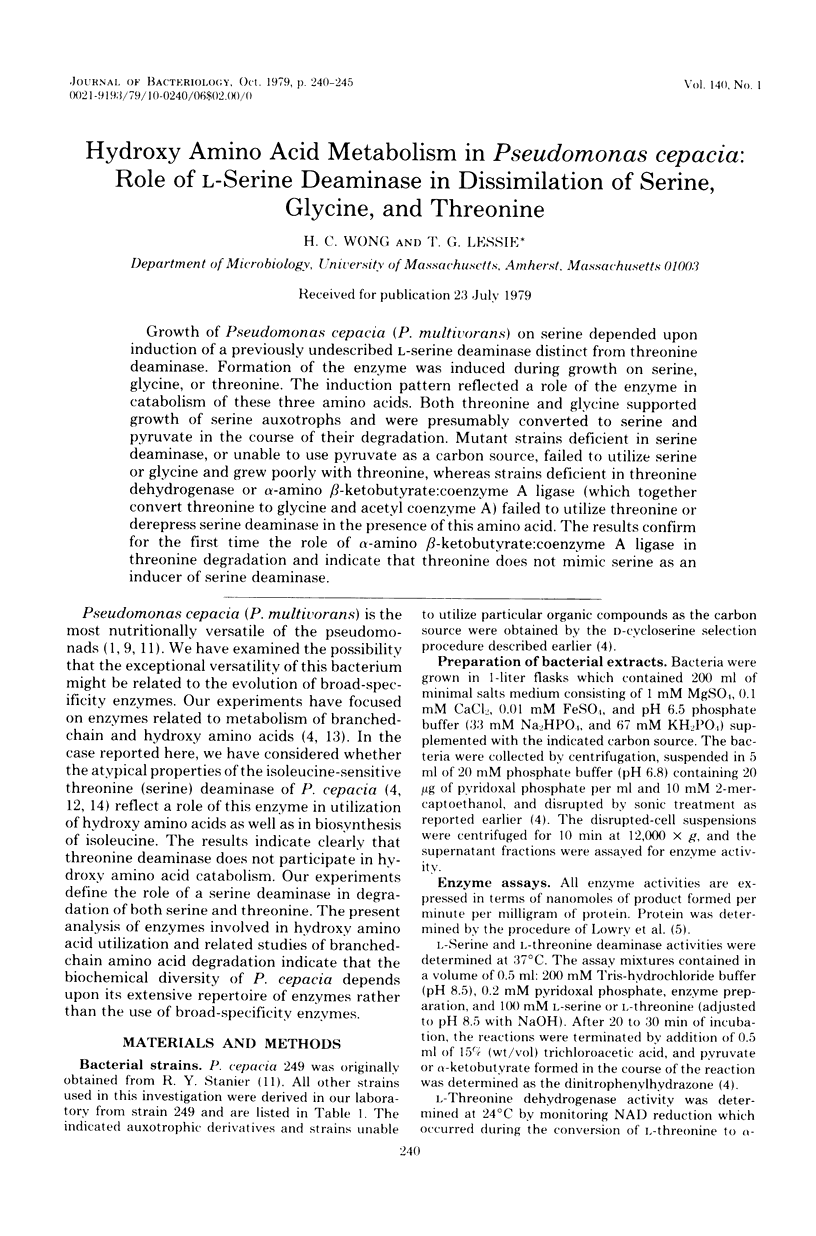
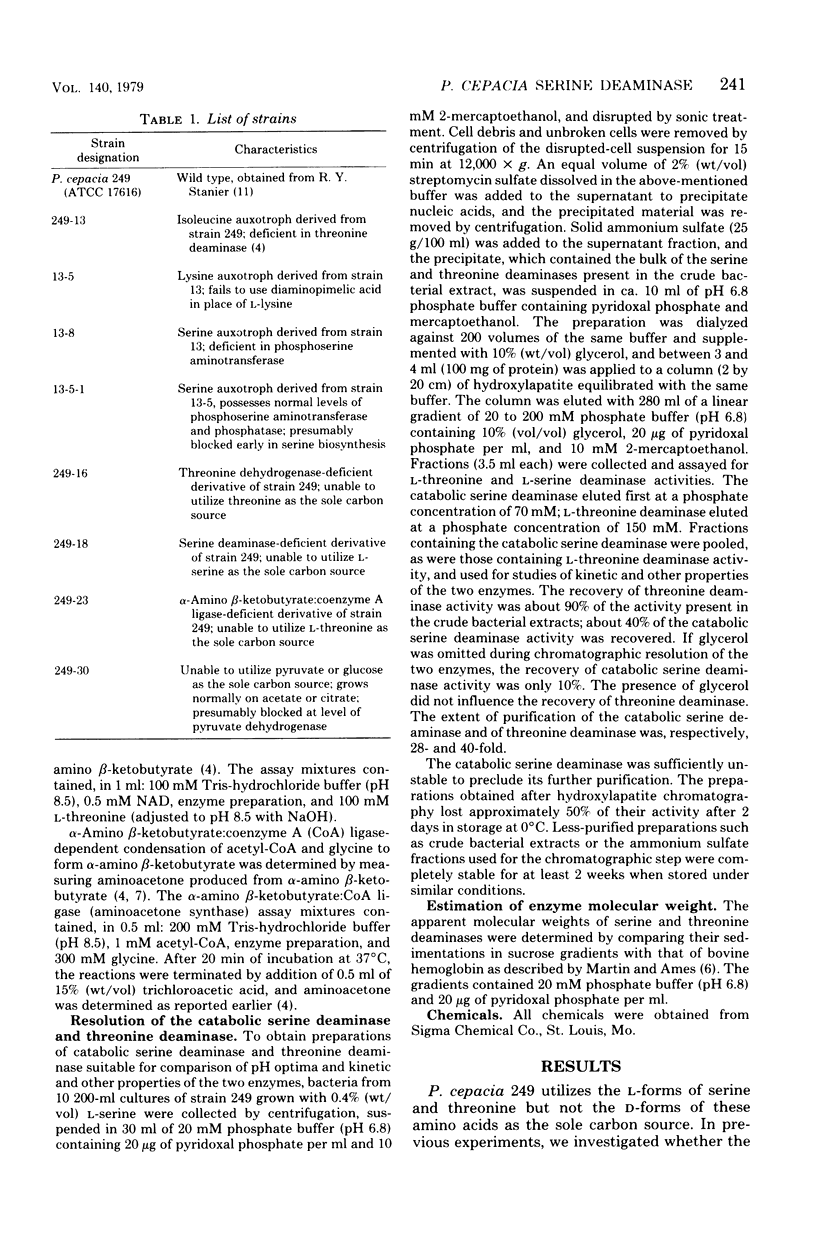
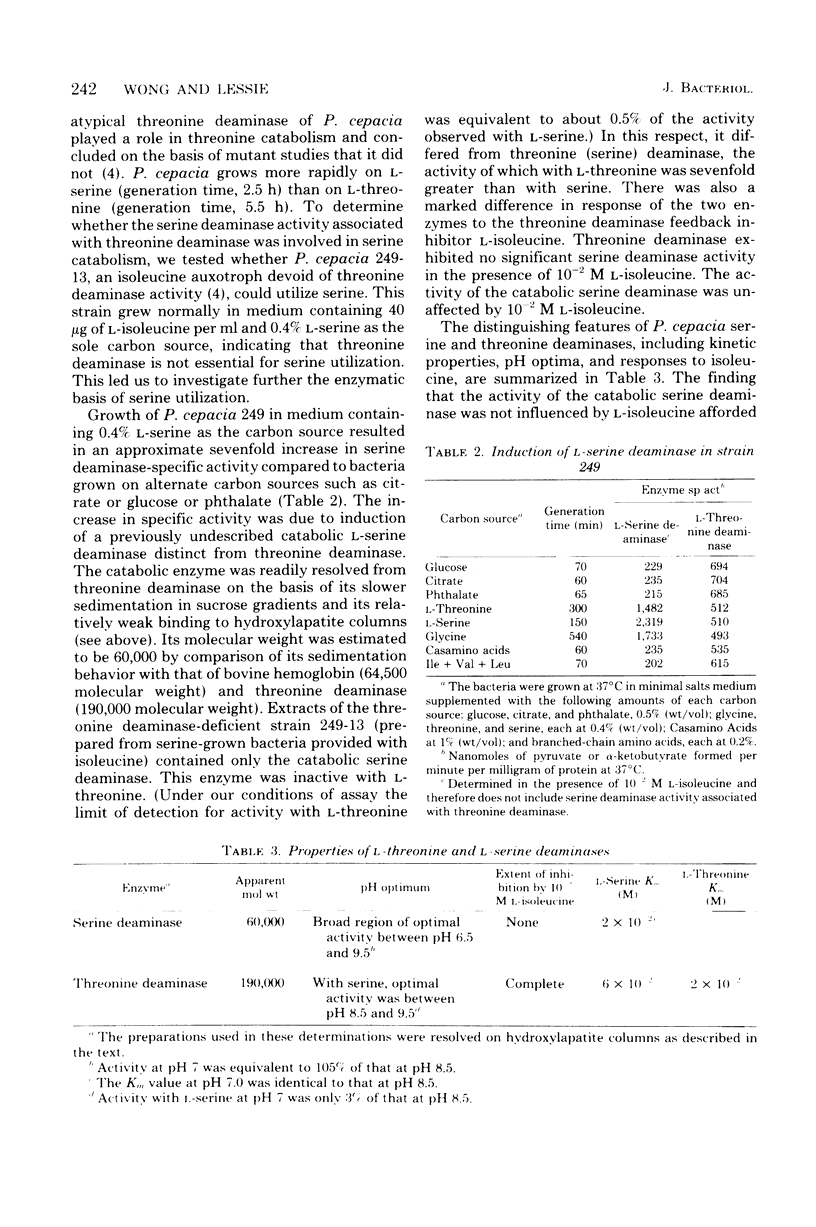
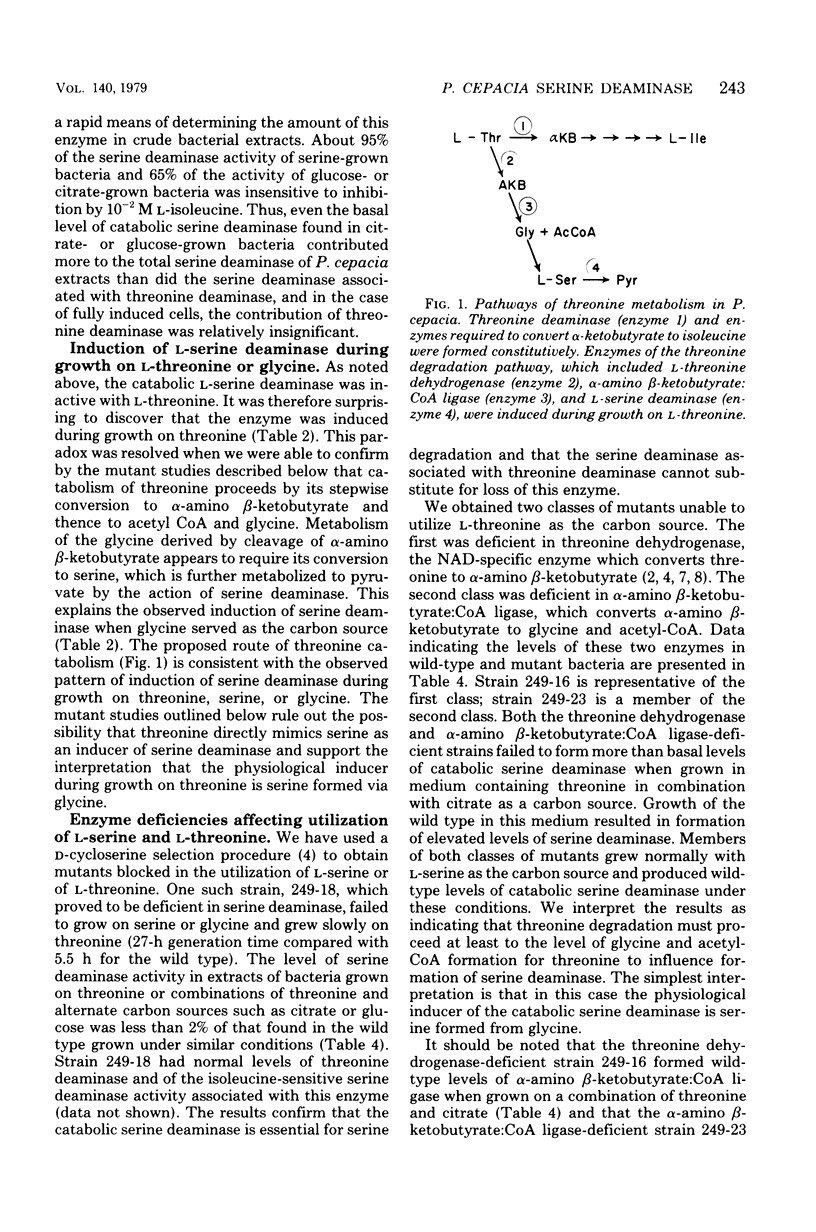
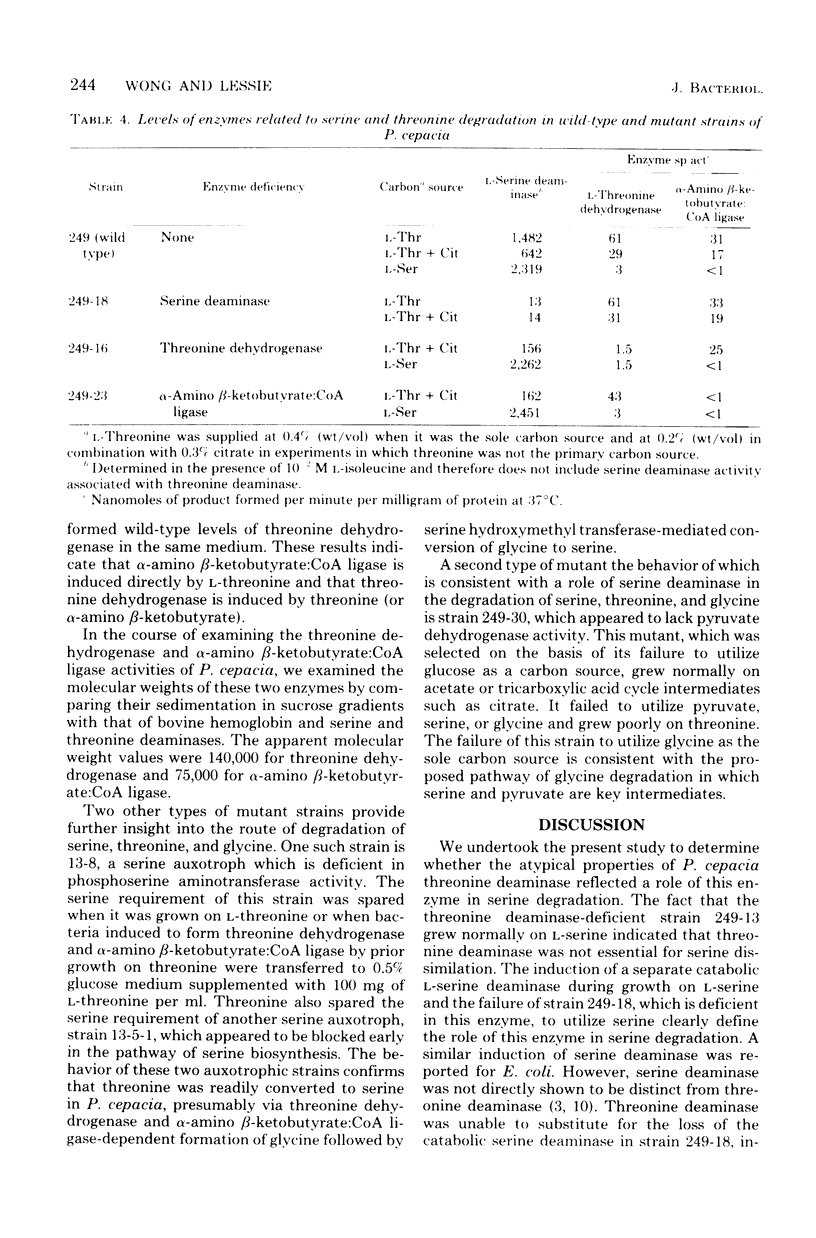
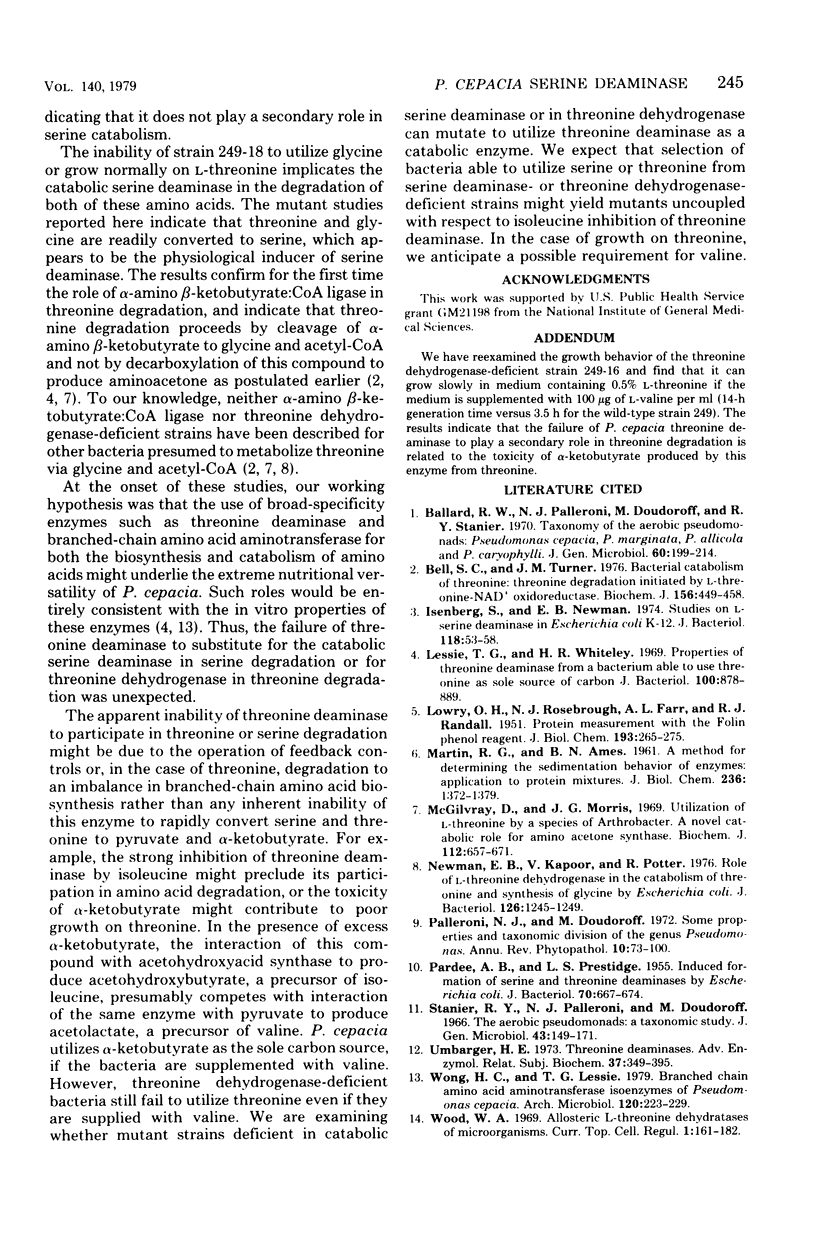
Selected References
These references are in PubMed. This may not be the complete list of references from this article.
- Ballard R. W., Palleroni N. J., Doudoroff M., Stanier R. Y., Mandel M. Taxonomy of the aerobic pseudomonads: Pseudomonas cepacia, P. marginata, P. alliicola and P. caryophylli. J Gen Microbiol. 1970 Feb;60(2):199–214. doi: 10.1099/00221287-60-2-199. [DOI] [PubMed] [Google Scholar]
- Bell S. C., Turner J. M. Bacterial catabolism of threonine. Threonine degradation initiated by L-threonine-NAD+ oxidoreductase. Biochem J. 1976 May 15;156(2):449–458. doi: 10.1042/bj1560449. [DOI] [PMC free article] [PubMed] [Google Scholar]
- LOWRY O. H., ROSEBROUGH N. J., FARR A. L., RANDALL R. J. Protein measurement with the Folin phenol reagent. J Biol Chem. 1951 Nov;193(1):265–275. [PubMed] [Google Scholar]
- Lessie T. G., Whiteley H. R. Properties of threonine deaminase from a bacterium able to use threonine as sole source of carbon. J Bacteriol. 1969 Nov;100(2):878–889. doi: 10.1128/jb.100.2.878-889.1969. [DOI] [PMC free article] [PubMed] [Google Scholar]
- MARTIN R. G., AMES B. N. A method for determining the sedimentation behavior of enzymes: application to protein mixtures. J Biol Chem. 1961 May;236:1372–1379. [PubMed] [Google Scholar]
- McGilvray D., Morris J. G. Utilization of L-threonine by a species of Arthrobacter. A novel catabolic role for "aminoacetone synthase". Biochem J. 1969 May;112(5):657–671. doi: 10.1042/bj1120657. [DOI] [PMC free article] [PubMed] [Google Scholar]
- Newman E. B., Kapoor V., Potter R. Role of L-threonine dehydrogenase in the catabolism of threonine and synthesis of glycine by Escherichia coli. J Bacteriol. 1976 Jun;126(3):1245–1249. doi: 10.1128/jb.126.3.1245-1249.1976. [DOI] [PMC free article] [PubMed] [Google Scholar]
- PARDEE A. B., PRESTIDGE L. S. Induced formation of serine and threonine deaminases by Escherichia coli. J Bacteriol. 1955 Dec;70(6):667–674. doi: 10.1128/jb.70.6.667-674.1955. [DOI] [PMC free article] [PubMed] [Google Scholar]
- Umbarger H. E. Threonine deaminases. Adv Enzymol Relat Areas Mol Biol. 1973;37:349–395. doi: 10.1002/9780470122822.ch6. [DOI] [PubMed] [Google Scholar]
- Wong H. C., Lessie T. G. Branched chain amino acid aminotransferase isoenzymes of Pseudomonas cepacia. Arch Microbiol. 1979 Mar 12;120(3):223–229. doi: 10.1007/BF00423069. [DOI] [PubMed] [Google Scholar]


